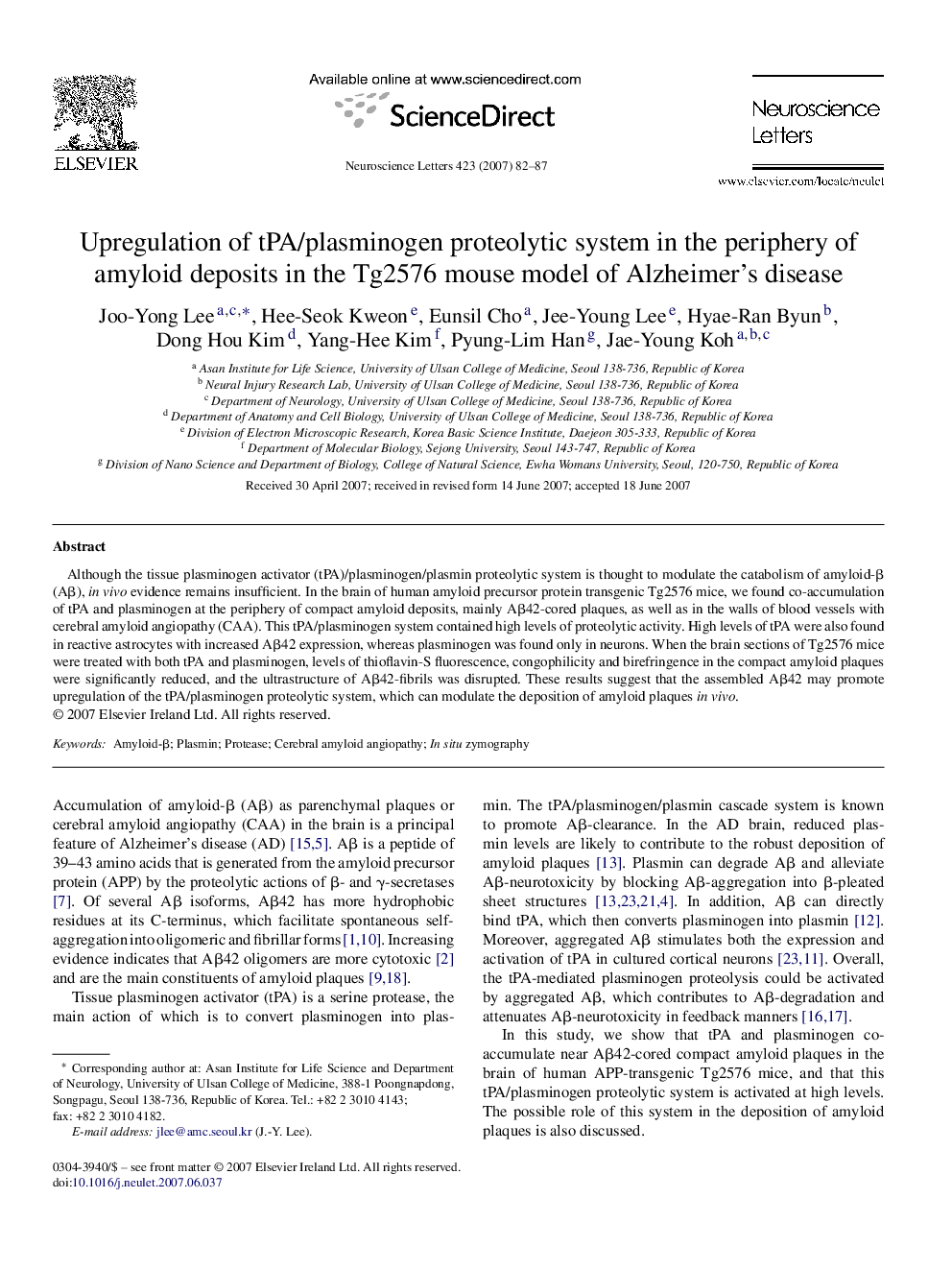| Article ID | Journal | Published Year | Pages | File Type |
|---|---|---|---|---|
| 4349356 | Neuroscience Letters | 2007 | 6 Pages |
Although the tissue plasminogen activator (tPA)/plasminogen/plasmin proteolytic system is thought to modulate the catabolism of amyloid-β (Aβ), in vivo evidence remains insufficient. In the brain of human amyloid precursor protein transgenic Tg2576 mice, we found co-accumulation of tPA and plasminogen at the periphery of compact amyloid deposits, mainly Aβ42-cored plaques, as well as in the walls of blood vessels with cerebral amyloid angiopathy (CAA). This tPA/plasminogen system contained high levels of proteolytic activity. High levels of tPA were also found in reactive astrocytes with increased Aβ42 expression, whereas plasminogen was found only in neurons. When the brain sections of Tg2576 mice were treated with both tPA and plasminogen, levels of thioflavin-S fluorescence, congophilicity and birefringence in the compact amyloid plaques were significantly reduced, and the ultrastructure of Aβ42-fibrils was disrupted. These results suggest that the assembled Aβ42 may promote upregulation of the tPA/plasminogen proteolytic system, which can modulate the deposition of amyloid plaques in vivo.
